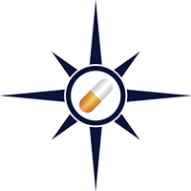A watershed moment in the journey of a drug is when it transitions from being a patented, high‐priced innovator product to an affordable generic.Through an inaugural approval, or a “first generic”, the US Food Drug Administration (FDA) permits a manufacturer to market a generic version of a brand‐name drug — a process that, when successful, grants 180 days of exclusivity to the generic sponsor. This exclusivity is especially valuable when the drug in question is a blockbuster.In FDA’s fiscal year 2024 (i.e. from October 1, 2023 to September 30, 2024), the number of first-time generic drug approvals decreased by 21.3 percent — from 89 in FY 2023 to 70 in FY 2024, the lowest in at least nine years.Lupin emerged as a frontrunner in
first generics, increasing its approvals from three in FY 2023 to seven in FY
2024, Apotex and Zydus Lifesciences from four to six, and Dr. Reddy’s from two to four. In
contrast, Teva, Amneal, and Sun Pharma experienced a decline.Overall, neurology led the way with 10 approvals, while immunology saw eight, including three approvals in dermatology. Oncology and cardiology/vascular disease saw six approvals each. Ophthalmology saw five while psychiatry, and infectious diseases each contributed four approvals. View First Generic Drug Approvals by FDA in FY 2024 (Free Excel Available) Novartis’ top seller Entresto, blockbuster Tasigna among six key drugs hit by generic rivalsIn 2024, the tide turned sharply for Novartis as it
lost exclusivity for six of its drugs. Among them was its blockbuster Entresto,
that has generated US$ 29.2 billion in revenue
so far, including US$ 7.8
billion in 2024.A combination of sacubitril and valsartan, Entresto has transformed
heart failure management. Entresto was the primary driver of Novartis’ sales growth last year. It was also one of the 10 drugs selected by the Biden administration in 2023 for Medicare price negotiations. Novartis has been fighting a fierce legal battle to protect Entresto from generic competition. In 2024, Entresto’s generic saga reached a crescendo. Alembic Pharmaceuticals, Laurus Labs, and Crystal Pharmaceutical’s generic versions of Entresto
received FDA approval in May last year. But the Swiss drugmaker has noted that
as of January 2025, there were no Entresto generics available in the US.Novartis’ Tasigna (nilotinib) has been a cornerstone in the treatment of Philadelphia chromosome-positive chronic myeloid leukemia (Ph+ CML). Apotex won approvals for generics of 50 mg, 150 mg, and 200 mg of nilotinib formulations, thereby offering a more affordable option for both adult and pediatric patients. Owing to the generics, Tasigna’s sales fell 10 percent in 2024.Novartis’ Mekinist (trametinib), Votrient (pazopanib), Rydapt (midostaurin), and Promacta (eltrombopag) have long been critical
treatments in oncology and hematology. With generic competition hitting these
key assets, Novartis is now aggressively forging deals to strengthen its
pipeline. View First Generic Drug Approvals by FDA in FY 2024 (Free Excel Available) FDA clears first generics for Neurocrine’s Ingrezza, Supernus’s Gocovri, ALS drugsIn psychiatry, Neurocrine Biosciences’ Ingrezza (valbenazine) capsules have carved out a niche for themselves as a first-in-class treatment for tardive dyskinesia, a movement disorder that can develop as a side effect of long-term use of antipsychotic meds. Two generics for Ingrezza from India’s Zydus and Lupin bagged FDA
approval, as Ingrezza sales topped US$ 2.3 billion last year.Zydus also won first generic approval for Supernus Pharmaceuticals’ Gocovri (amantadine) extended-release capsules, which is a treatment of dyskinesia in Parkinson’s disease patients receiving levodopa-based therapy.Four companies received FDA approvals for their first generics of Mitsubishi Tanabe’s patented drug Radicava (edaravone). These are Dr. Reddy’s Laboratories, Gland Pharma (a Fosun Pharmaceutical subsidiary), Hikma and Long Grove. Radicava is a drug that treats amyotrophic
lateral sclerosis (ALS), also known as Lou Gehrig's disease. Another treatment
for ALS from Italfarmaco — Tiglutik (riluzole) — received a first generic when FDA okayed Alkem Laboratories riluzole oral suspension.
The med helps slow disease progression. View First Generic Drug Approvals by FDA in FY 2024 (Free Excel Available) Pfizer’s Ibrance, Gilead’s Descovy, Lilly’s Olumiant treatment come under generic pressureIn oncology, Synthon Pharmaceuticals launched its generic version
of Pfizer’s Ibrance (palbociclib) tablets. Generating sales
of US$ 4.4 billion in 2024, this groundbreaking CDK4/6 inhibitor is Pfizer’s best-selling cancer drug. It has transformed treatment for hormone receptor-positive, HER2-negative advanced breast cancer by halting cancer cell division and significantly extending progression-free
survival when combined with endocrine therapy.Descovy, a combination of emtricitabine and tenofovir alafenamide, stands as one of the most
important therapies in the fight against HIV infection and related conditions.
Originally developed by Gilead Sciences, Descovy has played a pivotal role in modern antiretroviral
therapy, contributing US$ 2.1 billion to Gilead’s revenue in 2024. Apotex’s first generic approval for
Descovy marked its second copycat for a blockbuster drug in 2024. The other generic approval it got its hands on was for Boehringer Ingelheim’s Pradaxa (dabigatran etexilate), a blood thinner that
posted sales of € 845 million (US$ 883 million) in 2023.In immunology, Eli Lilly’s Olumiant (baricitinib) has emerged as an important
therapy for treating inflammatory conditions such as rheumatoid arthritis. Aurobindo Pharma bagged FDA approval for
generic baricitinib tablets.Ipsen’s Somatuline Depot (lanreotide) injection, a treatment for
neuroendocrine tumors and endocrine disorders that generated about € 1.07 billion (US$1.1 billion) in
2023 sales, also has a generic now, with Cipla’s subsidiary InvaGen Pharmaceuticals receiving an FDA approval. View First Generic Drug Approvals by FDA in FY 2024 (Free Excel Available) FDA okays copycats for opioid
withdrawal med Lucemyra, weight loss drug Qsymia, contraceptive SlyndFDA also demonstrated a focused commitment to addressing two of the nation’s biggest public health concerns — the opioid crisis and obesity. Lucemyra (lofexidine), originally developed by US WorldMeds, is a non-opioid medication indicated for mitigating
symptoms associated with acute opioid withdrawal and facilitating the
completion of opioid discontinuation treatment. The introduction of Indoco Remedies’ generic version is
poised to expand access to this critical therapy by offering a cost-effective
alternative for managing substance use disorders.Vivus’ Qsymia (phentermine/topiramate), a chronic weight
management therapy, also received a first generic. Actavis’ generic for Qsymia provides a more
accessible option to patients striving to lose weight. Actavis is a subsidiary
of Teva.FDA also approved Lupin’s first generic version of Insud Pharma’s Slynd—a progestin‑only contraceptive containing 4
mg drospirenone for use by females of reproductive potential to prevent pregnancy. View First Generic Drug Approvals by FDA in FY 2024 (Free Excel Available) Our viewOver
the next two years, several blockbusters such as Novo Nordisk’s Ozempic (semaglutide), AstraZeneca’s Farxiga (dapagliflozin), Bristol Myers Squibb’s Revlimid (lenalidomide) and its Pfizer partnered drug Eliquis (apixaban) stand to lose their patent protection. We expect more patent litigations and some exciting innovations in the generics space.








